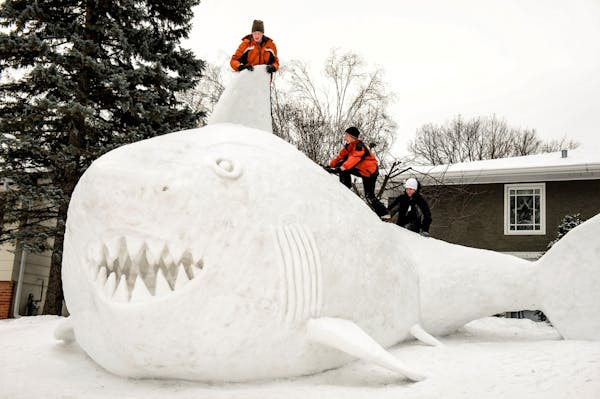Can't bear the thought of another snow day? Find the scroll of school closings painful to watch?
Just wait until summer arrives and Minnesota schools are still in session.
Some school officials are contemplating scheduling makeup days in June as their school calendars are on the verge of being blown up by a particularly bitter winter. Teachers and parents also have found their best-laid plans badly buffeted.
Most Twin Cities metro area schools have canceled classes for three days this month, and Monday's forecast of 5 below zero makes a four-peat appear possible. And then there's February. And March.
"This is very unusual for our district," Barb Brown, a spokeswoman for the South Washington County School District, said Thursday. "I can't recall this ever happening before. We closed for two days four or five years ago, but we do everything we can to stay open."
Most school districts pad their calendars with a couple of extra days above the state-required minimum, which usually averages out to 170 days. But once that threshold is crossed, makeup days are required.
In the Stillwater Area School District, Thursday marked the limit of snow days built into the academic calendar, said Carissa Keister, district spokeswoman. From this point on, still early in the season, any decision to close will mean adding school days later in the year.
Officials with St. Paul public schools said they aren't contemplating makeup days at this point, and aren't enamored with the thought that they soon might have to.
"Since we are approaching the limit and there is a lot of winter left, we are concerned about using up all the so-called 'extra days' in our calendar," Toya Stewart Downey, a district spokeswoman, said in an e-mail. "We value every day of instruction, so these decisions are very difficult to make regardless of the flexibility in the calendar."
Indeed, most school administrators dread canceling classes. Parents will complain. Valuable teaching time will be lost. And controversy will erupt if a neighboring district decides to hold classes.
But in the end, concern about student safety trumps all. When windchills approach 30 degrees below zero, exposed skin can freeze in a matter of about 10 minutes.
"It's easy for people in these situations to [play] Monday morning quarterback," said Tony Taschner, spokesman for the Rosemount-Apple Valley-Eagan School District. "They're thinking about their own situation. … They don't have to think about 27,000 kids. Superintendents … know that there are going to be kids always waiting at bus stops."
A scramble for parents
Thursday's school cancellations took some parents by surprise. Anoka-Hennepin was the first district to cancel classes, and it wasn't until several hours later that others followed suit. A few districts opted to start two hours late, while others, including Duluth, stayed open.
This time around, Minnesota education officials were not contemplating canceling classes statewide. Gov. Mark Dayton took that unusual step Jan. 6. "That was a unique situation since most schools were coming off a two-week break," said Josh Collins, a spokesman for the state Department of Education.
Michelle Knoll, whose three sons attend Nativity of Mary School in Bloomington, said she and her husband have had to "piecemeal" child care as a result of school closings this year.
Just a few months into a new job, her vacation time is limited, so she's had to ask neighbors and family to help out.
"It's been very hard," she said.
For teachers, a mixed blessing
For teachers, the school closings have meant a chance to catch up on paperwork.
Lisa Olson, a fourth-grade teacher at Elk River, spent about 4½ hours on Thursday doing paperwork before taking her kids to a movie.
"I think every teacher brings home a stack of papers every night," she said. "I was very happy to get to my pile today."
Still, she and other teachers say they worry that more missed schools days could hurt student learning.
Thousands of students will begin taking the Minnesota Comprehensive Assessments this spring. That high-stakes test influences poverty aid and school rankings and shapes opinions about teacher quality.
"There is definitely a rush to make sure they can get all the lessons in before then," said Denise Specht, president of Education Minnesota, the statewide teachers union.
Staff writers Jim Anderson, Anthony Lonetree and Erin Adler contributed to this report, as did Meghan Holden, a University of Minnesota student on assignment for the Star Tribune. Kim McGuire • 612-673-4469

Trail section at one of Minnesota's most iconic spots closing for rehab

Will 'shotgun only' zone for deer in southern Minnesota be abolished?

Four Minnesotans catch salmonella in outbreak linked to basil sold at Trader Joe's

